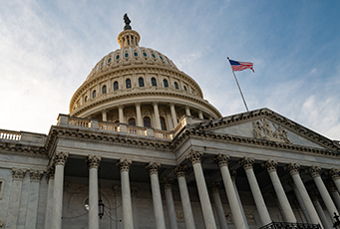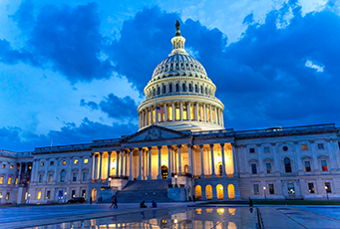When it was signed into law last month, the One Big Beautiful Bill Act (OBBBA) introduced various new provisions, including significant changes to charitable giving. Since many provisions aren't effective until 2026, now is your opportunity to evaluate and possibly modify any charitable giving plans.
New AGI Floor on Charitable Deductions
The deductibility of charitable contributions is subject to Adjusted Gross Income (AGI) limitations, which depend on the type of property donated and the type of organization to which it is donated.
For public charities, cash contributions are deductible up to 60% of AGI and non-cash contributions up to 30% of AGI (for fair market value evaluation). For other types of charitable organizations, cash contributions are deductible up to 30% of AGI and non-cash contributions up to 20% of AGI.
If a contribution exceeds these limitations, the excess contribution can be carried over and used in the following tax year, for up to 5 years.
The OBBBA creates a new floor on the deductibility of charitable contributions, starting in 2026. The floor is equal to 0.5% of AGI, which means that deductions are only allowed if the taxpayer's charitable contributions exceed 0.5% of their AGI.
After the floor, the contributions will be subject to the AGI limits noted above. The amount subtracted as a part of the floor calculation is not carried forward unless contributions exceed the AGI limits.
For example, a taxpayer's AGI is $200,000, and they gift $65,000 of appreciated stock to a public charity (30% AGI limit). The floor is worth $1,000 ($200,000 AGI x 0.5% floor), making the deductible contribution $64,000, before AGI limits. When applying the 30% AGI limit, the maximum deductible contribution is $60,000 ($200,000 x 30%). Both the $1,000 floor and the $4,000 unused deduction ($5,000 total) can be carried forward.
What if the taxpayer gifts $40,000 of appreciated stock instead? After the $1,000 floor, the deductible contribution is $39,000. Since the actual gift is less than the maximum deductible contribution of $60,000, $0 will be carried forward, leaving the $1,000 floor dollars unused.
If you haven't bunched your contributions every other year to maximize your tax benefits, you might consider doing so to ensure your donation exceeds the AGI floor.
In addition, you might consider starting the bunching strategy by year-end 2025 to avoid the AGI floor before it becomes effective in 2026. A Donor-Advised Fund is a great way to implement
this strategy, because you can invest the funds for growth and make distributions to various charities whenever you'd like.
Itemized Deduction Limitation
Before the Tax Cuts and Jobs Act (TCJA), high-income taxpayers who itemized their deductions were subject to the Pease limitation, which reduced their itemized deductions. The TCJA temporarily suspended the Pease limitation; however, the OBBBA has brought it back with different limitations.
Starting in 2026, this new rule will impact taxpayers in the 37% tax bracket (those with taxable income greater than $626,250 for single filers and $751,600 for joint filers).
Total itemized deductions will be reduced by 2/37 of the lesser of total itemized deductions or the amount of taxable income (plus itemized deductions) exceeding the 37% bracket. It’s a bit complicated, but all in all, this will cap total itemized deductions at 35% rather than 37%, diminishing the tax benefit of charitable donations.
This provision will impact less than 1% of the taxpaying population; however, the reduction in tax benefits can be significant. If you find yourself in this income range and have a large charitable donation in your future, you might consider making it before the end of the year, rather than waiting.
Charitable Deduction for Non-Itemizers
To receive a deduction for charitable contributions, a taxpayer would typically need to itemize. As the standard deduction has increased over the years, it's become less common for taxpayers to itemize, especially for those in lower to middle-income households.
To incentivize non-itemizers to participate in charitable giving, the CARES Act of 2020 created a temporary deduction (through the year 2021) of up to $600 for joint filers and $300 for single filers who claimed the standard deduction.
The OBBBA brings back this charitable deduction for non-itemizers, starting in 2026. The deduction will be $2,000 for joint filers and $1,000 for single filers and will not be subject to income limits. To be considered a "qualified" charitable contribution, the following criteria must be met:
- The contribution must be made in cash
- It can be made to public or private charities, but not 509(a)(3) supporting organizations
- It cannot be used to establish or maintain a donor-advised fund
If you're charitably inclined but haven't been consistent with your giving because the tax benefits were lacking, this new provision remedies that by rewarding a broader group of givers.
Conclusion
There will be significant changes to charitable giving in 2026, and taxpayers of all income levels will be impacted. Reach out to your Financial Planner to evaluate your charitable giving goals and formulate a plan going forward.
Schedule a Consultation
We have helped our clients answer these questions and more. If you want a clear understanding of your financial future, and need help making changes to reach your goals, schedule a consultation and we can get started.
This material has been gathered from sources believed to be reliable, however Bedel Financial Consulting, Inc. cannot guarantee the accuracy or completeness of such information, and certain information presented here may have been condensed or summarized from its original source. To determine which investments or planning strategies may be appropriate for you, consult your financial advisor or other industry professional prior to investing or implementing a planning strategy. This article is provided for informational purposes and is not intended to provide investment, tax or legal advice, and nothing contained in these materials should be taken as such. Investment Advisory services are offered through Bedel Financial Consulting, Inc. Advisory services are only offered where Bedel Financial Consulting, Inc. and its representatives are properly licensed or exempt from licensure. No advice may be rendered unless a client agreement is in place.
Recommended Articles
“Trump Accounts”: A Family’s Guide to One Big Beautiful Opportunity
Trump Accounts are part of the OBBB and designed to...
Taxpayer’s Guide to the “One Big Beautiful Bill”
The One Big Beautiful Bill is more than just a catchy...





